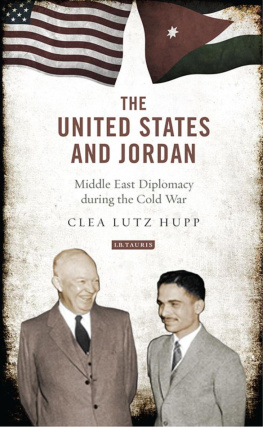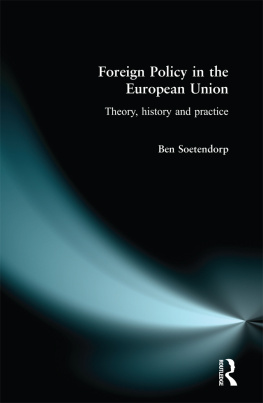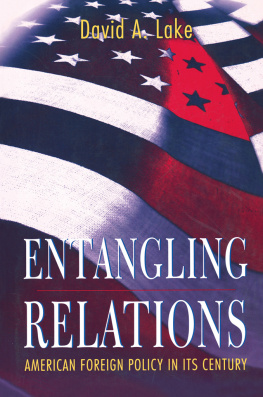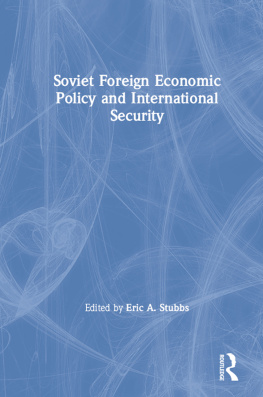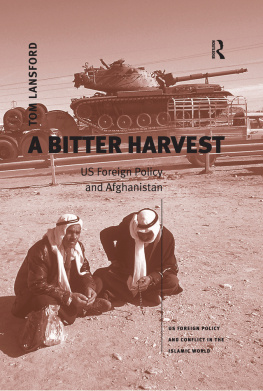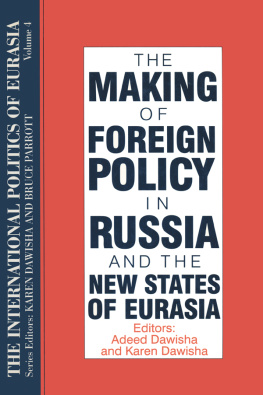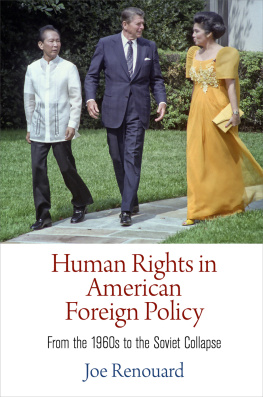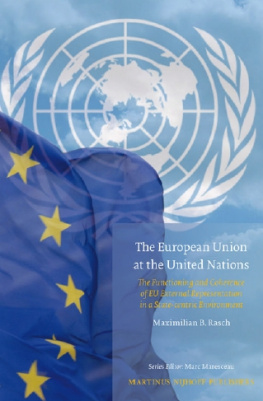FOREIGN POLICY AT THE PERIPHERY
FOREIGN POLICY
AT THE
PERIPHERY
The Shifting Margins
of US International Relations
since World War II
Edited by Bevan Sewell and Maria Ryan

Copyright 2017 by The University Press of Kentucky
Scholarly publisher for the Commonwealth, serving Bellarmine University, Berea College, Centre College of Kentucky, Eastern Kentucky University, The Filson Historical Society, Georgetown College, Kentucky Historical Society, Kentucky State University, Morehead State University, Murray State University, Northern Kentucky University, Transylvania University, University of Kentucky, University of Louisville, and Western Kentucky University.
All rights reserved.
Editorial and Sales Offices: The University Press of Kentucky
663 South Limestone Street, Lexington, Kentucky 40508-4008 www.kentuckypress.com
Cataloging-in-Publication data is available from the Library of Congress.
ISBN 978-0-8131-6847-0 (hardcover : alk. paper)
ISBN 978-0-8131-6849-4 (epub)
ISBN 978-0-8131-6848-7 (pdf)
This book is printed on acid-free paper meeting the requirements of the American National Standard for Permanence in Paper for Printed Library Materials.

Manufactured in the United States of America.

| Member of the Association of
American University Presses |
Contents
Bevan Sewell and Maria Ryan
Robert J. McMahon
David Ekbladh
Andrew J. Rotter
Alan McPherson
Simon Dalby
Mary Ann Heiss
Ryan Irwin
Philip Dow
Dustin Walcher
Tanya Harmer
Christopher R. W. Dietrich
David Ryan
Hal Brands
Maria Ryan
Introduction
Bevan Sewell and Maria Ryan
In January 2012, the Obama administration released a new report on defense in an era of austerity. Titled Sustaining U.S. Global Leadership, the report stressed the national security imperative of deficit reduction. In essence, the administration wanted to cut the defense budgetand by extension the national deficitwithout seriously imperiling US global leadership. The new era of austerity, catalyzed by congressional concerns about the national debt, forced the Obama administration to outline a vision of US leadership that was more cognizant of limits; one that identified core areas of interest in the twenty-first century and core tasks as well as secondary or peripheral regions and missions. For the Obama administration, the core regions were the Asian Pacific and the Middle East. The so-called pivot to Asiathe most noted aspect of the new strategywas premised on Chinas emergence as a regional power [that] will have the potential to affect the U.S. economy and our security in a variety of ways. Less noteworthy, and more predictable, was the strategys emphasis on the Middle East as another core region: the administration would continue to place a premium on U.S. and allied military presence inand support ofpartner nations in and around this region. However, in more peripheral areas, such as Africa and Latin America, we will develop innovative, low-cost, and small footprint approaches to achieve our security objectives.
The perceived differences between the importance of certain areas was reflected in Obamas elevation of Pentagon train-and-equip programs in Presidential Decision Directive 23. Assisting indigenous security forces The pinch on resources and American capabilities thus required a more prudent approach to national securityone that paid heed to the fact that, in those areas deemed peripheral, the attainment of US goals would necessitate the utilization of alternative approaches.
Ultimately, however, this most recent approach to core and peripheral regions came undone with the rise of the Islamic Statea virulently anti-American coalition of extremist Sunni insurgents that took control of parts of Iraq and Syria in 2014. Obama was faced with the dilemma of how to preserve vital US interests in a core region of concern when there was little public appetite for further intervention there. The unsatisfactory solution was to send US military advisers to conduct the kind of train-and-equip programs that had really been envisaged for use in more peripheral theaters.
Obama, of course, is hardly the first president to struggle to determine the extent of US interests abroad or establish how they should be secured. When the United States emerged as an economic and military superpower at the end of World War II, its leaders made every effort to actively preserve this preponderance of power. With Washingtons interests now defined as truly global in scope, US officials faced the challenge of prioritizing competing interests in different regions of the world, determining the means necessary to defend them, and reconciling this with what was politically and financially possible. But this task was complicated by the emergence of the Soviet Uniona competing superpower promoting an antithetical economic and social system. For the next fifty years, US policymakers attempted to define the core economic, military, and political interests essential to the maintenance of US dominance of the Western world and, if possible, the extension of American influence into newly independent and nonaligned countries.
While the announcement of the Truman Doctrine in March 1947 had potentially committed the United States to an open-ended commitment to help free peoples to maintain their free institutions and their national integrity against aggressive movements that seek to impose upon
In Kennans formulation, then, the United States could focus primarily on these core areas and adopt a more cautious approach elsewhere. In an inversion of the problem that would later confront Obama, however, major challenges to this approach would soon emerge when communism appeared to be making rapid progress in areas that the United States had previously deemed peripheral. With the American people being informed that communism was a monolithic entity controlled by Moscow and eager to destroy Western civilization, it became hugely difficult for the Truman administration not to respond to Communist advances in places outside Kennans five vital centers. This was especially true in Korea, where, in June 1950, the Communist Norths attack on the South fatally undermined Kennans strategy.
Previously, in adhering to Kennans notion that US capabilities were
Following a period in which China had gone Communist following the success of Mao Zedongs forces in the Chinese Civil War and the Soviets had successfully exploded a nuclear device, however, the perception that international communism was on the march prompted an alarmist response to the outbreak of war in Korea. Suddenly, Kennans more prudent model looked dangerously narrow: if the United States did not oppose Communist expansion in Korea, then, potentially, it would be seen as abandoning the entire region. Communist militarism would have to be met in kind. Distinctions between core and periphery in Cold War strategy thus began to look premature. NSC 68, the revised national security strategy agreed on in the wake of the Korean War, offered a potential solution to this by essentially globalizing Americas definition of what could be referred to as a
Next page



